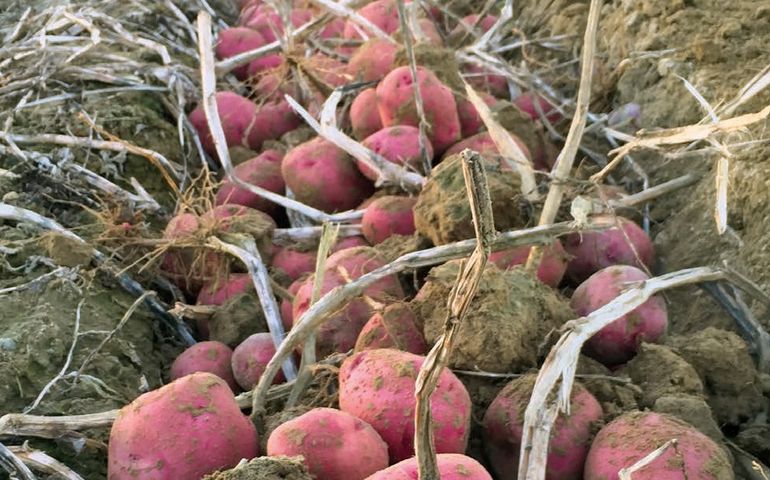Maine’s farm, fish, forest industries show shrinking economic impact since 2015
 FILE photo
Potato farming in Maine saw a strong harvest in 2021.
FILE photo
Potato farming in Maine saw a strong harvest in 2021.
A new report shows that agriculture, commercial fishing and forest product industries together have a growing economic impact and are responsible for an increasing number of jobs across eight Northeast states, although the number of farms and their acreage are down.
But Maine, broken out, has seen a decline in nearly all of the economic measures.
Enfield, Conn.-based Farm Credit East, the region’s largest agricultural lender, recently released a report based for the states of Maine, Connecticut, Massachusetts, New Jersey, New York, New Hampshire, Rhode Island and Vermont.
The new report, based on data from 2017, found that 75,657 farms and related businesses throughout the Northeast used 11.5 million acres to produce $103.6 billion in economic activity supporting 521,284 jobs on and off the farm.
A 2015 report found that 79,485 farms and related businesses employed 12.1 million acres to produce $103.4 billion in economic activity supporting 483,375 jobs.
2020 report
The 2020 report shows that Maine’s agriculture, commercial fishing and forest product businesses generated $11.7 billion in economic activity and supported 74,523 jobs.
Among the report’s highlights:
• Agricultural production, including dairy and processing, had $3.6 billion in economic impact and supported 27,063 jobs.
• Maine has 7,600 farms and more than 1.3 million acres in farmland. Anchored by potato production, vegetable farming is the leading agricultural sector.
• Forestry, logging and related processing support had an economic impact of $6.6 billion and supported 31,995 jobs.
• Commercial fishing and aquaculture had $1.4 billion in economic impact and supported 12,188 jobs supported.
2015 report
The 2015 report shows that Maine generated $13.9 billion in economic activity and supported 79,011 jobs.
• Agricultural production, including dairy and processing, had $3.9 billion in economic impact and supported 24,475 jobs.
• At that time, Maine had more than 8,000 farms and approximately 1.5 million acres in farmland.
• The forest products industry had an economic impact of $8.8 billion and supported 40,289 jobs.
• The commercial fishing industry, including lobstering, had $1.2 billion in impact and supported 14,000 jobs.
Essential industries
“As the pandemic has shown, food and agriculture, forest products and commercial fishing are essential industries and play a major part in our economy, resulting in jobs, local food and fiber production, and economic activity across the region,” Mike Reynolds, Farm Credit East’s CEO, said in a news release.
"Despite current challenges, these industries have a bright future here in the Northeast and with appropriate state policies and community support, will continue to enhance the region’s economy.”
The Northeast’s diversity within the sectors includes dairy, commercial fishing, fruit, vegetable, forest products, nursery and greenhouse.
In addition to the economic activity created from agricultural production and harvest activities, a key takeaway from this report is the added economic impact through services businesses, such as suppliers, repair, equipment, lenders and insurance, and through processing activities such as dairy processing plants, sawmills and wineries.
To view the full report, click here.










0 Comments